Affiliate links on Android Authority may earn us a commission. Learn more.
A beginner's guide to NAS drives, the smarter way to handle storage
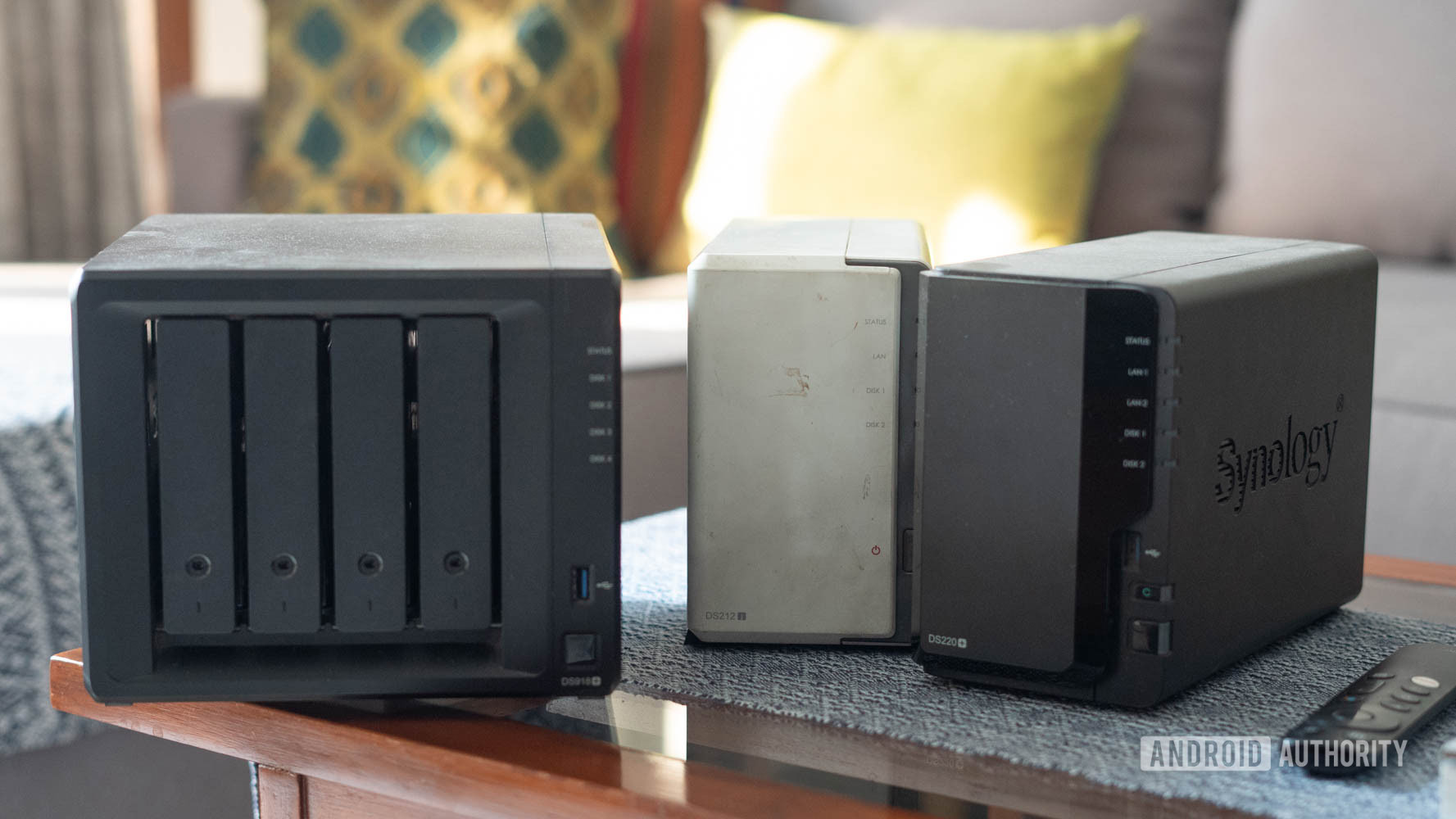
Computer and smartphone users alike have to deal with the same problems: limited and sealed-in storage, difficulty in sharing files, and troubles backing up data. There’s a good chance that you’ve invested in some form of cloud storage to combat that.
However, the fact of the matter is cloud storage alone is not always an effective backup method even if we’re talking about your smartphone. Be it mounting storage costs, platform lock-in, or speed of access, cloud storage can be best thought of as a secondary backup to local storage.
A NAS or Network Attached Storage, on the other hand, serves perfectly as a destination for additional storage or as a backup destination for all the computers, phones, and tablets on your network. We’ll look at what a NAS is and which one you should buy.
What is a NAS device?
NAS or Network Attached Storage can be many things, but, at the crux of it, it is a smarter way to handle storage. Running its own operating system, a NAS presents itself on your local network as a destination to store any kind of data. Additionally, a properly configured NAS can also be used as a remote destination for backing up or storing data over the internet.
A NAS can ship in various configurations ranging from a single drive, all the way to 12 or 16-bay monsters or even rack-mounted versions for more demanding users. You can even build your own DIY NAS using a Raspberry Pi or desktop components if you are so inclined, but this isn’t necessarily the best route for the average home user.
Unlike an external hard drive, a NAS cannot be connected directly to a computer over USB. Instead, the NAS operating system can be interfaced using a variety of protocols like SMB, AFP, NFS, or even good old FTP. Depending on your operating system of choice, you can then mount the NAS drive to access the storage as and when needed.
What you need to know when picking out a NAS
Picking out a NAS essentially comes down to your budget and requirements. While it is certainly possible to get a single drive NAS, we’d recommend steering clear of entry-level models. Stepping up to a higher-end model opens up possibilities in the form of expansion and the ability to run apps like media servers directly on the NAS.
Additional bays can be used for redundancy or extra storage.
We would highly recommend picking up at least a two-bay unit. The addition of a second or more bays affords you a range of possibilities, including the choice between redundancy and storage. Moreover, you don’t have to buy all the hard drives in one go. Depending on your budget, you can pick up one hard drive with the NAS and add more storage as your requirements grow.
What you plan to do with a NAS is just as important while picking out a unit. While a basic NAS will more than suffice as a storage destination for files from multiple computers and phones, a competent NAS can be much more than that. A powerful NAS can serve as a media server, a photo server, run virtual machines, or host websites.
How to configure storage on a NAS
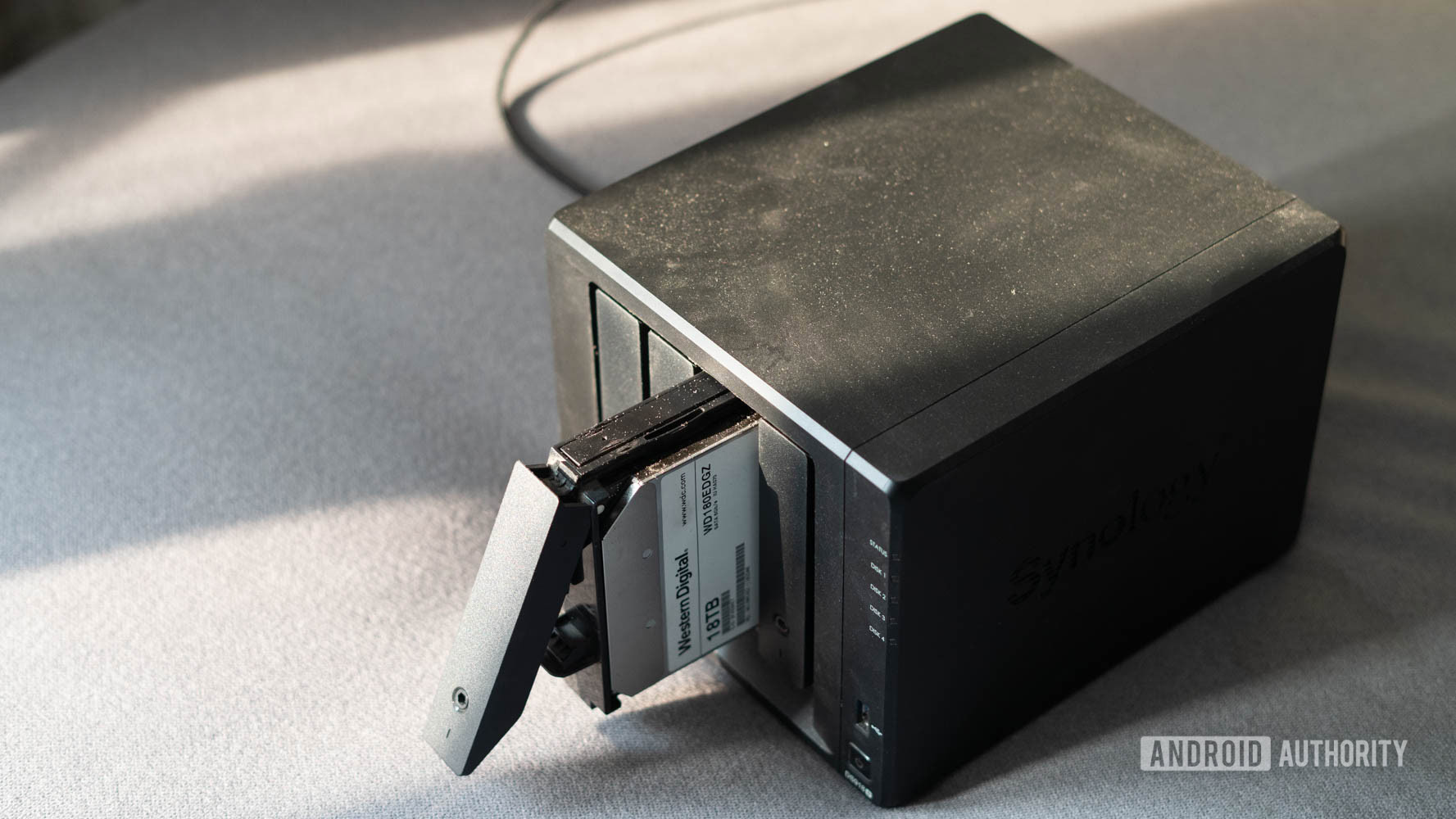
Plugging a second drive into a NAS will give you a way to prevent data loss even if you experience total drive failure. A feature known as Redundant Array of Independent Disks (RAID) can help utilize additional drives in ways beyond just adding more capacity. A deep dive into the various RAID configurations would be beyond the scope of this article. But most users will want to stick to RAID levels 1, 5, or 6 for protection against hardware failure.
RAID 0
The most basic form of RAID, i.e., RAID 0, distributes your data across multiple disks. This form of RAID improves read and write speeds considerably. However, the downside of RAID 0 is that you lose all your data with no chance of recovery if any single drive fails. As you’d have guessed, this solution isn’t designed for backups and we don’t recommend it for most use cases.
RAID 1
RAID 1 only nets you half the amount of total hard drive space storage but comes with peace of mind. In this configuration, every single bit or byte that you copy over to the destination is copied to a second drive. Assuming you’ve added in two 8TB drives to your NAS, your available storage will still be just short of 8TB since a 1:1 copy of your data is maintained on the other drive.
But here’s the advantage of this approach. In case of a drive failure, you can swap out the failing drive, and the data will be copied back to it. For most home users, this level of redundancy proves to be sufficient.
SHR or Synology Hybrid RAID
Some NAS providers like Synology offer a middle way solution. Synology Hybrid RAID or SHR, for example, builds upon the feature set of RAID 0 and RAID 1 by allowing you to optimize for storage, while still offering single drive fault tolerance. Classic RAID adds storage equivalent to the original hard drive from any additional drives.
For example, if your first hard drive had 1TB of storage, RAID1 would still give you just 1TB of storage even if you added two additional hard drives of a larger size. In contrast, if you add two additional 2TB hard drives to an SHR-based system, it will give you 3TB of usable space.
Should I invest in a NAS device for home use?
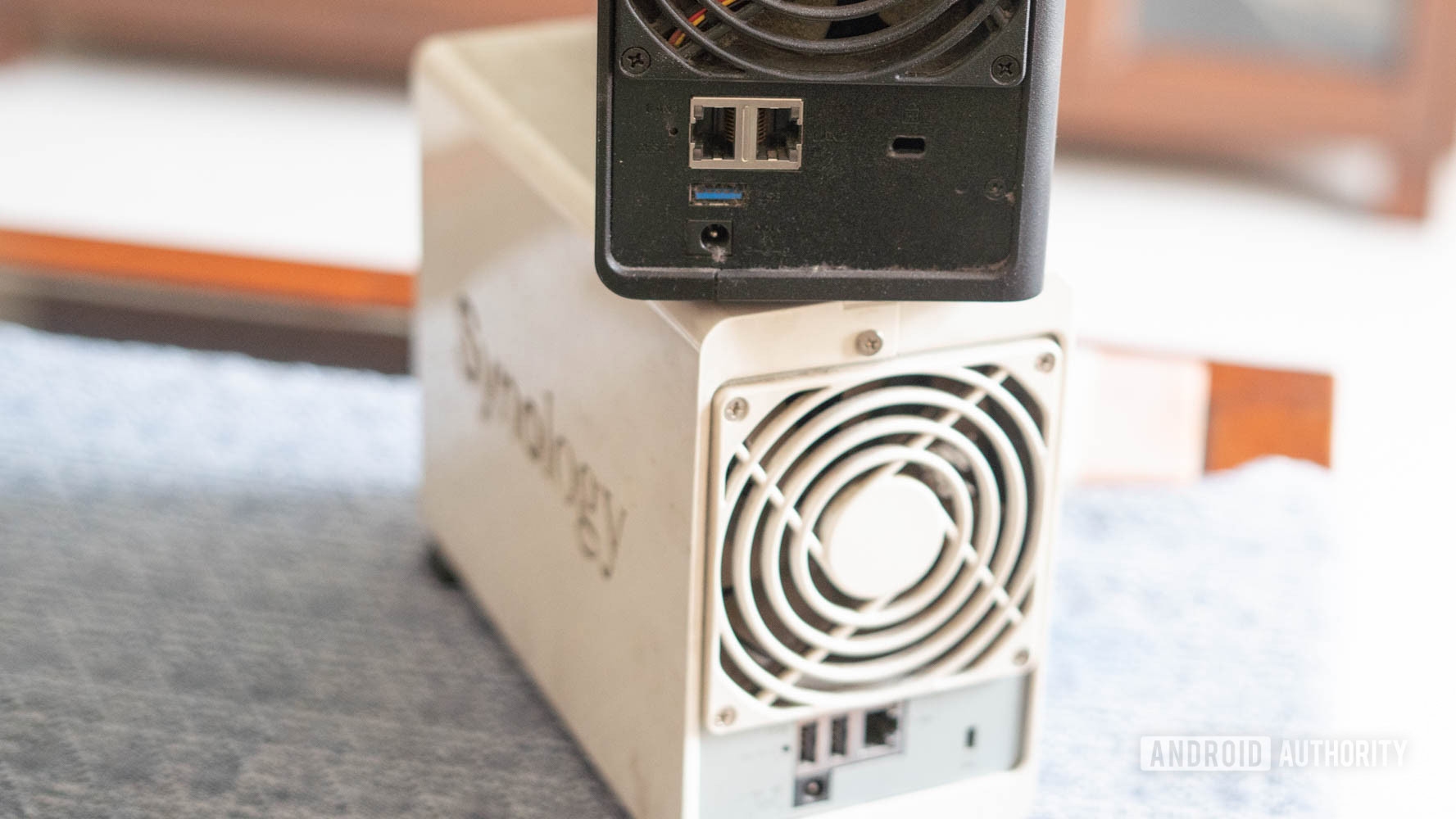
The reasons may vary, but most users would be well served by hosting a NAS at home. If you are the kind to shoot hundreds of photos on your phone or DSLR, or perhaps have a vast collection of movies that you’d like to digitize, a NAS can be a central hub to make them accessible to everyone. Personally, I use Plex running on a Synology DS918+ to stream my Blu-Ray collection to my television.
Sure, cloud storage is an easy alternative, but it comes with many restrictions, and the costs involved are just one. 2TB of storage via a Google One subscription will cost you $10 a month. That storage is woefully inadequate for anyone with a larger content library. Moreover, the cost is compounded if multiple users subscribe to storage plans.
A NAS, on the other hand, is a one-time purchase. A 4TB hard drive can be purchased for under $100, giving you ample storage without a subscription fee attached.
A NAS allows you to add lots of storage that can be accessed by all users on the network for a one-time cost.
If your usage involves playing back movies and music, cloud storage is a no-go once again. Most cloud storage providers have strict policies against storing copyrighted content, nor will a media server like Plex be able to read data off Google Drive or OneDrive.
Most important, however, are privacy and security. Placed on a cloud storage provider’s server, your data is subject to the whims and fancies of the service. For example, Google Photos removed the ability to store compressed images for free a few years ago. Google Takeout’s abysmal treatment of photo metadata makes it worse for long-term users.
Additionally, there’s platform lock-in to consider. You have no option but to pay the money for a higher storage tier if and when you exhaust your current plan. In the case of Google Drive, costs start at a considerable $25/month for 5TB of storage.
What’s the best NAS for me?
Buyers have several options on the market when looking to buy their first NAS. Synology, QNAP, and ASUStor are just a few brands that offer ready-to-use solutions. I would, however, personally recommend Synology. The Taiwanese manufacturer offers a slick operating system designed to get you up and running quickly.
The included package manager and Docker support on higher-end models ensure that you can run most applications you’d want to. Additionally, feature additions like the included quick-connect relay lets you access your NAS remotely without having to spend on a reverse proxy.
Synology DS220j
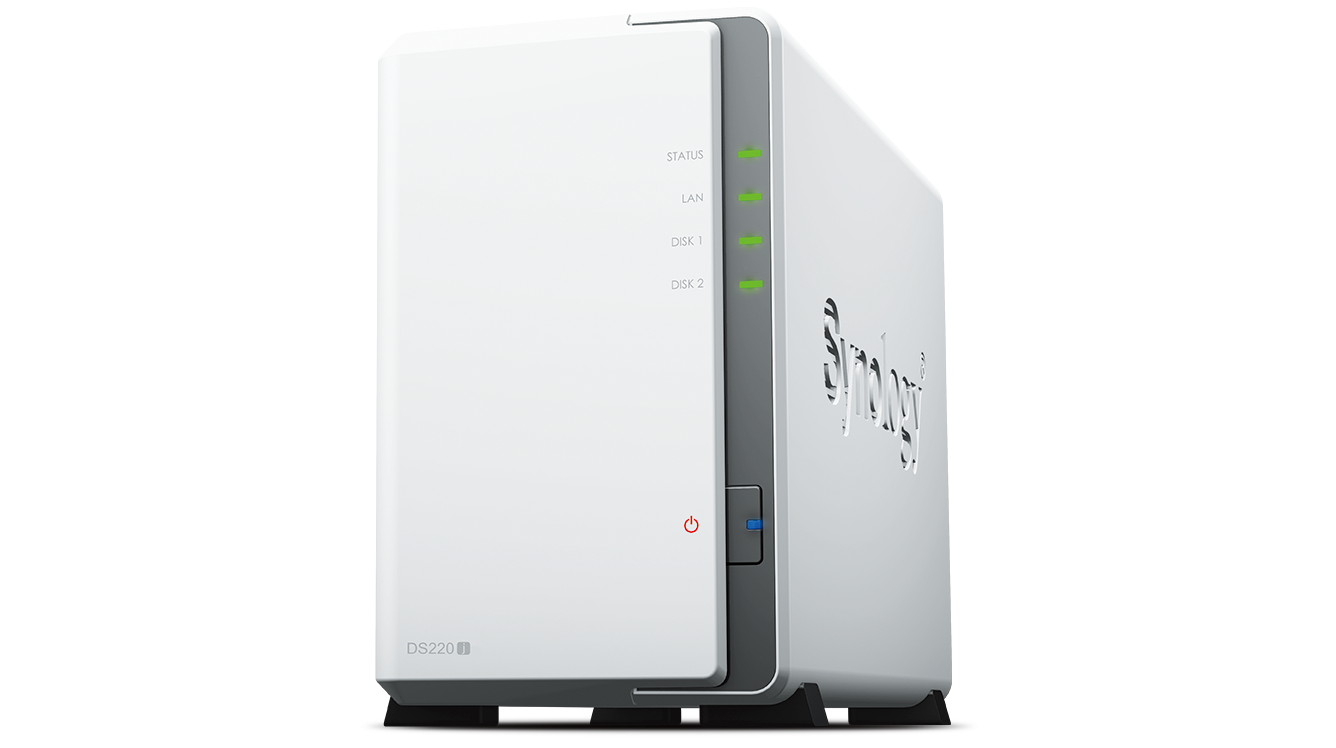
Synology’s entry-level NAS gives users two bays that can be configured for volume or redundancy. Being a budget solution, the NAS doesn’t have a very powerful processor. Running a media server is far from the best experience, especially if you expect to transcode some media. Priced at $189, the Synology DS220j is a capable data storage device for not too much money.
Synology DS220 Plus
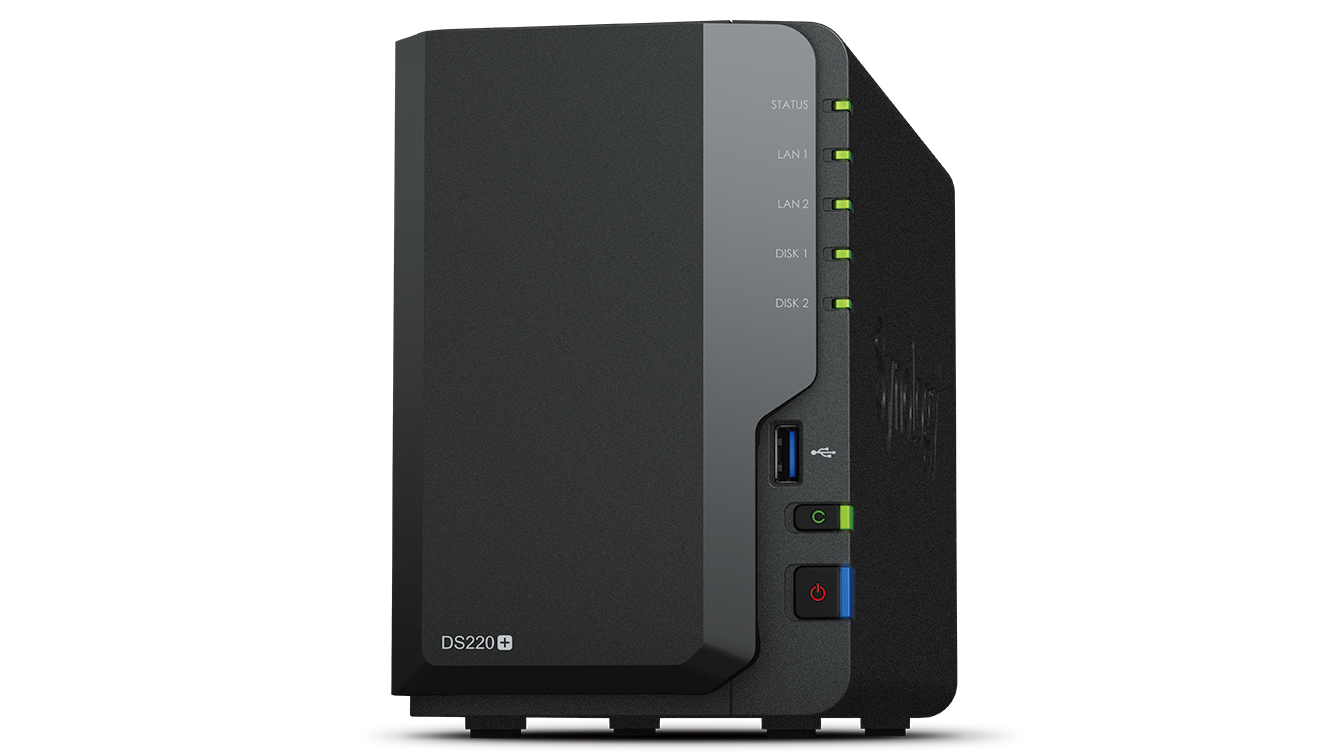
The two-bay DS220 Plus from Synology offers home users the most bang for the buck. The NAS supports all the latest hard drives, going all the way to 18TB while allowing for up to 36TB of space in a compact solution. We’d err on the side of SHR or RAID 1, though.
The much more powerful processor really sets the Plus apart from the regular DS220j. The dual-core Celeron chipset will allow you to run Docker-based apps, as well as Plex, with ease. It won’t suffice for transcoding multiple 4K streams simultaneously but will serve in a pinch as your own personal Netflix. The Synology DS220 Plus is priced at $299.
Synology DS920 Plus
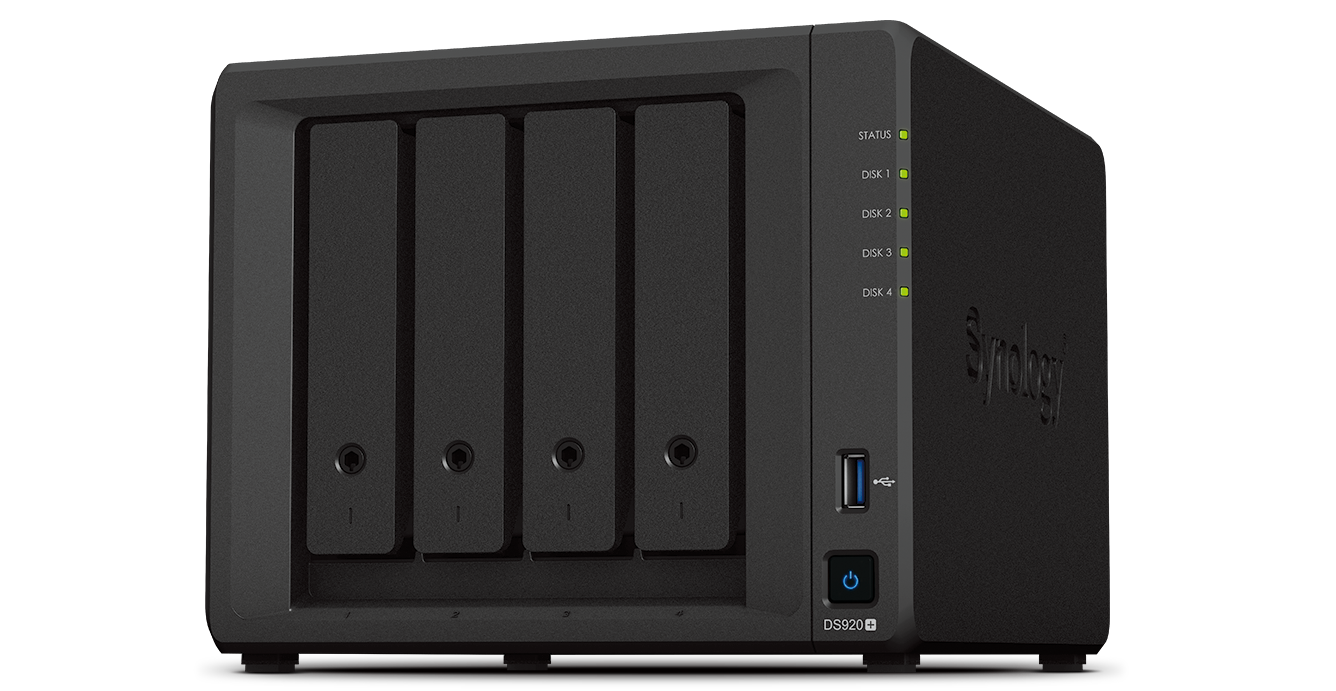
If you’ve got scalability on your mind and expect to add more storage over time, the DS920 Plus is your best bet. The four bays will allow for ample expansion, and you can even tack on an additional DX517 expansion bay for even more storage if you need it. The NAS has a quad-core Celeron processor and can handily take on media server duties while running a web server or anything else you choose.
The Synology DS920 Plus is aimed at more demanding users or even small businesses, and the steep $549 price point reflects that.
For more help choosing a NAS drive, you can check out this list of the best NAS drives available today.